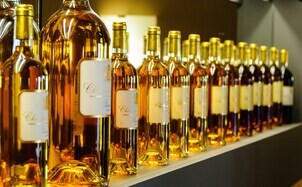
Perfect Wine Pairings for Cheeseboards

In the world of wine-minded pursuits, wine and cheese pairings remain eternal. A match which, when done right, is a sum greater than its parts. A combination that positively resonates, simultaneously enhancing the flavours and textures of both components.
But with so many varieties of both wine and cheese out there, you might feel a bit disoriented when looking to engage in a more informed and sophisticated experience. That’s why in this guide, we’re going to explore the more classic of these combinations, provide insights into why some wines go better with some cheeses, and suggest specific matches to help you make the most of your next wine and cheese-pairing venture.
Understanding Wine and Cheese Pairing
What's the best wine for cheese?
It’s in the balance. All is. Here lies the key to a successful wine and cheese pairing. It’s where you must consider all factors so that the wine’s characteristics complement the cheese, not overwhelm it. It is so you can then reciprocate by using the richness or sharpness of a cheese to bring out what’s best in what you uncork. This means taking account of what levels of acidity, sweetness, tannin, and intenseness of flavour lie beneath that cork.
Basic Principles for Cheese and Wine Pairing
At the same time, there are no commandments chiselled anywhere for achieving this. But the following general principles can serve as a useful starting point:
Match intensity
Delicate cheeses – goats’ cheese, feta, ricotta – are happiest with crisp, lighter-bodied white wines, while stronger cheeses, like a mature cheddar or blue cheese, want more robust wines. Often red.
Balance acidity and fat
Wines with higher acidity cut through rich, fatty creamy cheeses, thus refreshing your palate between bites.
Sweetness vs. saltiness
Opposites strongly attract here, where the sweet, honeyed fruit typical in dessert wines set up a thrilling contrast to the intense saltiness common to strong, pungent cheeses like blue cheese.
With these principles in mind, let’s explore some of the best wine and cheese pairings, first focusing on white, rosé and red before diving into more specific matches.
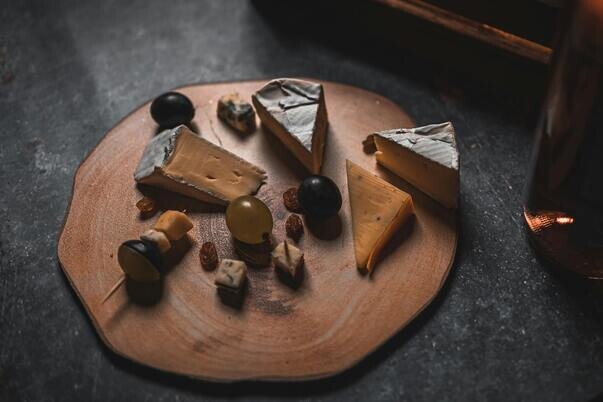
Classic Wine and Cheese Pairings
Sauvignon Blanc with Goats’ Cheese
An eternal classic. Where Sauvignon Blanc’s vibrant, grassy, flinty, citrus aromas and mouth-watering grapefruit zest and brisk acidity thrillingly resonate with the tangy, tart freshness of goats’ cheese (Crottin, Valençay…).
Here, citrus notes and herbal undertones mirror the cheese’s sharpness and create a vibrant, palate-cleansing experience. Try this pairing with Domaine Bellevue’s Sauvignon de Touraine, Jean Pabiot & Fils Domaine des Fines Caillots Pouilly-Fumé, or Chȃteau Bastor-Lamontagne’s Bordeaux Blanc: a gorgeous blend of sauvignon blanc with sémillon for a touch of richness.
And from the New World is a similar richness and exotic fruitiness you'll savour in Penedo Borges’ single vineyard Sauvignon Blanc (Mendoza, Argentina), as well in Greenhough’s River Garden Sauvignon (Nelson, New Zealand).
Chenin Blanc with Goats’ Cheese
For near-identical reasons Chenin Blanc is an ideal match with goats’ and similarly styled cheeses. Also a native of the Loire Valley in France, chenin blanc boasts vibrant acidity which this time drives fruit flavours more from the floral and orchard-fruit area of the spectrum: honeysuckle, green apple, red apple, apple skin, fresh pear.
Go to the Loire’s Vouvray region for Bernard Fouquet’s Le Petit Clos Sec or indeed to Chenin’s other heartland, South Africa, where Raats Family ‘Original’ Chenin Blanc shows sleekness and remarkable purity.
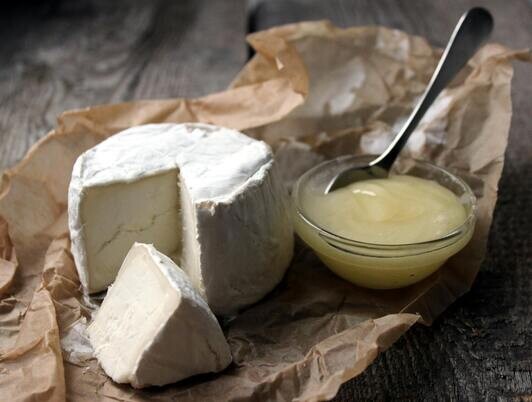
Chardonnay with Camembert / Soft, Creamy Styles
An oaked Chardonnay, with its buttery texture and notes of vanilla and toast, pairs beautifully with the creamy, mushroomy flavours of Camembert and other similar cheeses (Brie, Chaource, Epoisses, etc…).
Here, the wine’s rich, full body complements the luscious texture of the cheese, making for an indulgent pairing. Typically, this is where Burgundian-style Chardonnay leads the charge. Where Domaine Talmard’s Mâcon-Uchizy, Collovray et Terrier Saint-Véran Réserve, and Penedo Borges Prisma Gran Chardonnay, are happy to oblige, or, alternatively, where Famille Brocard’s ‘Montmains’ Chablis 1er Cru will do so with élan.
Pinot Noir & Gamay with Camembert / Soft, Creamy Styles
Similarly do Burgundy’s red counterparts – Pinot Noir and Gamay (i.e. Beaujolais) love this style of cheese. Where youthful, low-tannin, red and black-cherry fruitiness with zippy acidity prove a mouthwatering combination to resonate with the luxurious, intense creaminess and herbaceous, mushroomy nuances of cheeses that are typical of the region.
Although not exclusive to Burgundy, the region endures as Pinot Noir’s heartland, just as Beaujolais does for Gamay. It’s why reaching for a lip-smacking Bourgogne Rouge from Domaine Bicheron or an ethereal drop of gamay from Chȃteau de Fleurie’s Fleurie Beaujolais is how you get the best out of this sumptuous wine and cheese pairing.
Port with Stilton
Another eternal pairing. Iconic. Here, the sweetness of Port’s deep, rich, intense fruitiness balances the saltiness of the cheese, while also enhancing the creamy, tangy nature of Stilton. Pure luxury. Unpack a block of finest Stilton with Guimaraens 2012 Fonseca and you’ll experience the iconic.
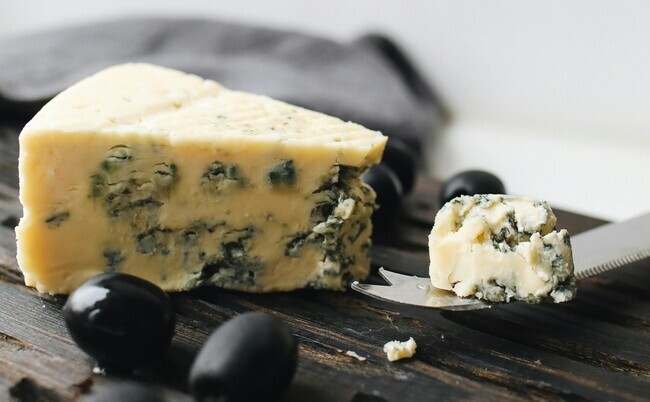
Sauternes with Roquefort
If ever opposites attract, it’s here. Where Sauternes brings honeyed, stone and tropical fruit flavours to the salty, sharp taste of Roquefort. Where luscious texture and supreme levels of acidity (from its Sauvignon Blanc and Sémillon components) cut through the richness of the blue cheese, creating a sublime harmony of sweet and savoury.
The ultimate dessert combination, for which our 2016 declassified Sauternes option couldn’t be more apt.
Best white wine for cheese?
It must be said first of all that most matches begin via white wine with cheese. Much of this owes to both their lower tannin and higher acidity levels, as well as to a general fruit profile range that has wider, more natural affinity to all the flavours and textures the world of cheese has to offer.
Sparkling wines
Champagne, English sparkling, Crémant de Bourgogne, Prosecco. High acidity, fresh red fruit, orchard fruit and citrus are a beautiful match with the light, tangy, flaky character of the following:
- Goats’ milk cheese
- Sheeps’ milk cheese
- Neufchȃtel
- Brie
- Comté (with matured vintage champagnes)
Light, crisp, fruity
Sancerre, Pouilly-Fumé, Sauvignon Blanc, Chenin Blanc (all as above), then Muscadet Sur Lie, Albariño, Grüner Veltliner, Riesling, Grillo. Picpoul de Pinet. Pairing these with the following enhances the refreshing, fruity character of light white wines without dominating the palate:
- Goats’ / sheeps’ cheeses
- Feta
- Ricotta
- Fresh Mozzarella
- Haloumi
Rosé wines
*All of the above will go equally well with a crisp, dry style of rosé such as a classic Côtes de Provence blend. Look no further than Château Léoube’s quintessential expression.
Medium-bodied / off-dry
Chardonnay, Viognier, Grenache Blanc, Pinot Gris, Pinot Blanc, Alsatian-style Riesling, Gewurztraminer. Here, floral aromatics, riper, more exotic fruit and stone fruit profiles, along with off-dry tendencies and a certain spiciness resonate strongly with the natural saltiness and/or nuttiness of the following:
- Gruyère
- Comté
- Munster
- Haloumi
- Aged Parmesan
- Aged Gouda

Sweet and fortified dessert wines
Sauternes, Baume de Venise (vin doux naturel), and Rutherglen Muscat (Australia) are ideal blue cheese wine pairing. As already cited in the Sauternes-Stilton combo, sweet wines with good acidity are a dream when paired with the rich, sweet and salty creaminess of blue cheeses and suchlike. Add to this the dried fruit and nutty notes on offer in sweet muscats and sherries, and your wine and cheese-pairing pleasure gains another dimension.
- Stilton
- Gorgonzola
- Danish Blue
- Dolcelatte
- Roquefort
- Bleu d’Auvergne
- Cambozola
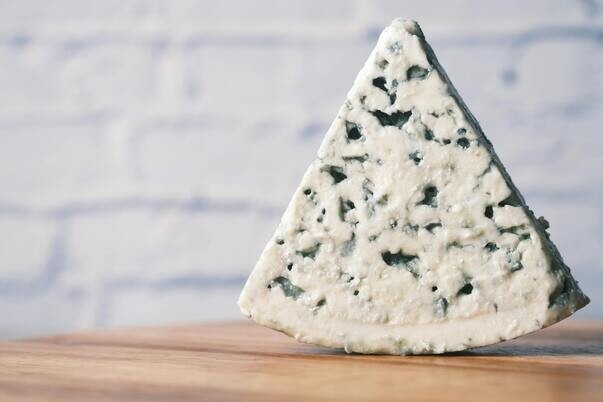
Best red wine for cheese?
Again, while white wines dominate the spectrum of cheese-pairing options, there do remain some tried-and-true favourites on the red end. But it’s where one must ensure that higher levels of tannin and alcohol in a fuller-bodied red are met with a cheese of sufficient power, pungency and ample texture. Otherwise a weaker cheese will be easily overwhelmed.
Light, fruity
Pinot Noir, Gamay, Loire cabernet franc. Light tannins and bright fruit flavours make any of these an ideal match for creamier cheeses. It’s precisely this youthful, delicate fruitiness which glides over the palate in tandem with the cheese’s silky, buttery texture, and where the wine’s acidity helps cut through the creamy richness.
- Camembert
- Brie
- Brillat-Savarin
- Epoisses
- Chaource
- Pont-l’Évȇque
- Taleggio
Medium- / full-bodied
Merlot, Grenache, Tempranillo, Sangiovese, Cabernet Sauvignon. Here’s where strong flavours and texture are required to harmonise with a deeper, darker degree of fruit extraction and tannin.
- Aged cheddar
- Aged gouda
- Manchego
- Parmesan
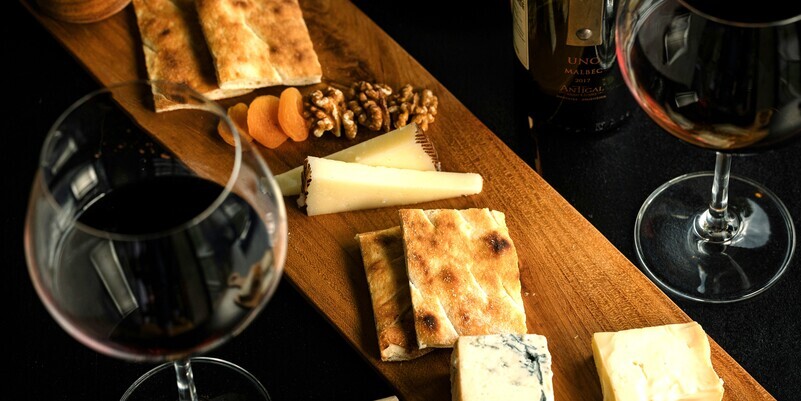
Port
Ruby Port, LBV Port, Tawny Port, Vintage Port. Beyond the classic match with Stilton as cited, the deep, rich, sweet dark fruit in port that’s driven by a nice, balancing acidity effortlessly extends the wine's pairing potential with all sorts of salty blue cheeses.
- Gorgonzola dolce
- Cambozola
- Dolcelatte
- Aged cheddar
- Roquefort Stilton
*Cheese and wine-pairing tip:
For an optimum flavour-matching experience, always allow your cheeses to acclimatise to ambient temperature whilst ensuring both that your white wines are only gently chilled (to the touch) and that you’ve uncorked your reds to allow them ample breathing time.
Keep it informal - experiment!
Ultimately, the points above serve merely as guidelines. Be willing to try new cheese and wine pairings. The better you get to know your wines, the more confident the taste buds in your imagination will be in projecting this familiarity onto new potential matches. Develop your lexicon of matching and contrasting elements and apply them accordingly.
Never tried Mahón from Menorca before, with its savoury, nutty character that intensifies with age? Then maybe the sumptuous, honeyed nuances in that viognier will do well. Fancy the velvety Brie-ness of this hitherto untasted Casatica di Bufala? Wouldn’t a slightly chilled Julienas Cru Beaujolais be a bit scrumptious alongside?
Yes. It would. But the choice is always yours, of course. So ensure this choice is informed by the practice of experimentation. Because whether it’s for a quiet evening at home or to compose an all-conquering cheeseboard for your hosted wine-and-cheese- tasting gig, training your senses always towards a more harmonious wine and cheese pairing will guarantee you a most gratifying experience.
But why limit your newly found pairing prowess to the cheeseboard? We say that such gratifying experiences should be an integral consideration in any gastronomic arena. So, check out our wine & food-pairing guide to learn how to broaden and maximise the role wine plays in all your culinary ventures.
-- David Adamick, FromVineyardsDirect


